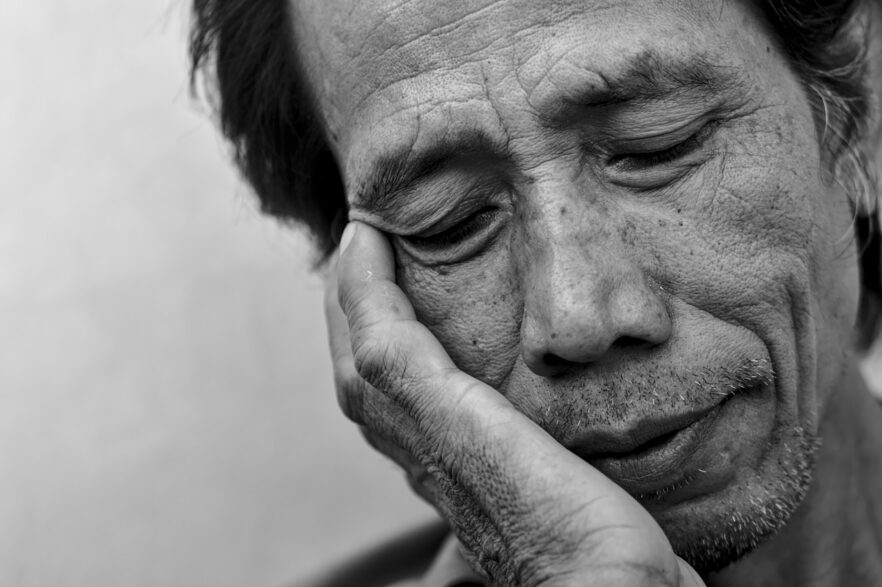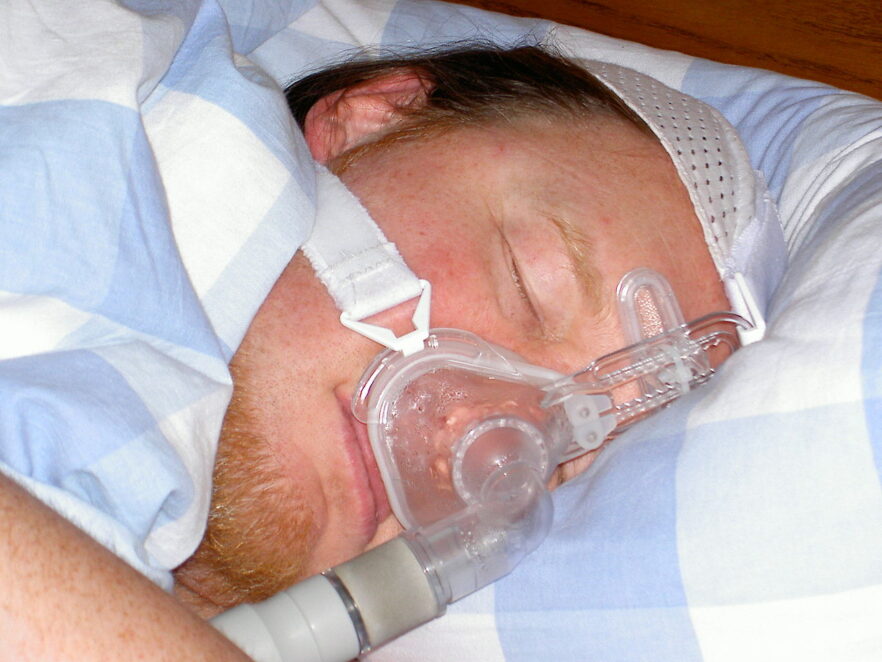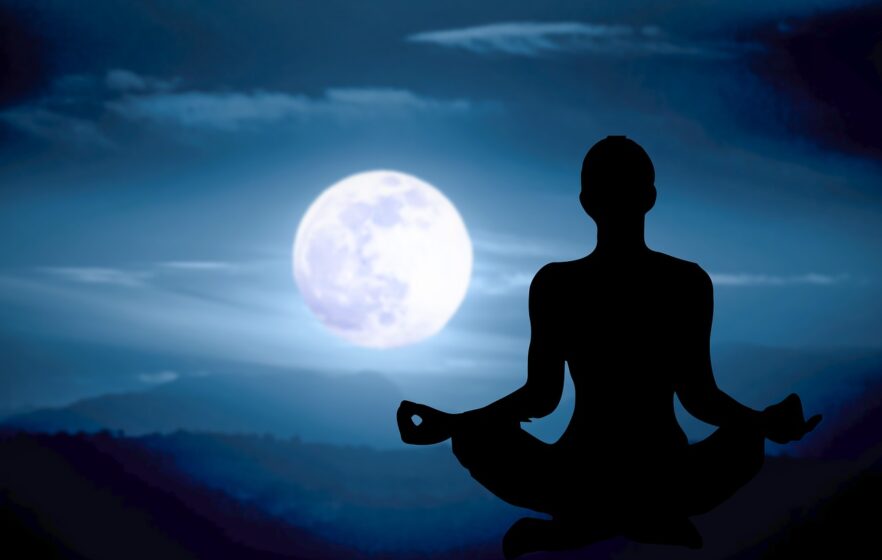1. Sleep Is Not Time Wasted
Sleep is known to have a direct effect on mental and emotional health. Most researchers agree that as much as the total number of hours asleep, the quality of sleep is as essential. Researchers have shown sleep deficit affects stress responses, immunity, decision-making, mood, and overall quality of life. Ancient healers knew of the relationship between sleep and wellness centuries ago.
Ayurveda is a holistic medical model practiced in India for over 3,000 years. Over 80% today report using Ayurvedic medicine. Shilajit has been an Ayurvedic treatment that enhanced sleep and promoted countless patients’ daytime wellness. Shilajit’s mountainous sources are the Himalayas’ peaks, mainly in India and Tibet. Shilajit is also found in the mountains of Peru and is called “Peruvian Shilajit.”
2. Sleep Science
Image by Gerd Altmann from Pixabay
Sleep has been a continued area of study in health and wellness. Identifying sleep apnea and its potentially devastating consequences has produced an entire specialty area surrounding sleep studies and home Continuous Positive Airway Pressure (CPAP) machine usage.
Researchers use a device called an electroencephalogram (EEG) to monitor brain waves while asleep. Identifiable brain waves are associated with levels of sleep and correlate to wakeful wellness and intellectual functioning. There are five stages of sleep identifiable by EEG monitoring.
Throughout sleep, the human brain repeats these stages with progressive lengths of some steps:
- Wake – When eyes are open the EEG primarily shows beta wave activity. As the individual closes their eyes and falls asleep, alpha waves predominate.
- N1 (light sleep/nonREM)- is a transient phase that accounts for about 5% of total sleep. It is identifiable on EEG when the EEG reveals that the mixed-frequency (LAMF) or theta waves take over the alpha waves.
- N2 (deeper sleep/nonREM)- is identifiable by sleep spindles or K complexes. Sleep spindles are spikes of neural activity from calcium ion exchanges in specific areas of the brain associated with memory. K complexes are the most prolonged and distinct waveform. These delta waves can last over a second. Breathing becomes slower and more regular, and the heart rate decreases during N2. In addition, teeth grinding (bruxism) typically occurs during this stage. N2 lasts about 25 minutes during the first sleep cycle and then prolongs with each subsequent cycle. In total, N2 contributes approximately 45% of the time sleeping.
- N3 (Deep sleep/nonREM)- The EEG shows theta waves in the deepest sleep. Cognitive studies reveal individuals awakened from N3 sleep are confused and have trouble processing for 30 to 60 minutes after arousal. The brain allows body repair during the deepest sleep. The brain enables bone, muscle, and nerve growth and repair during the N3 stage. During this period, The immune system propagates B and T cells. It is often difficult to awaken someone in deep N3 sleep. This stage of sleep is also where sleepwalking, bed wetting and night terrors occur. N3 accounts for about 25% of the sleep cycle.
- Rapid Eye Movement (REM) – REM is not a restful stage of sleep. The EEG looks like wakefulness. Aside from involuntary eyeball movements and irregular respirations, REM suppresses all other skeletal muscle activity. REM sleep starts about 90 minutes after the N1 Stage. The first REM cycle may last 10 minutes, expanding to an hour at the end of sleep. Usual dreaming and nightmares (not night terrors) and nocturnal erections occur during REM.
3. A Natural Sleep Aid

Shilajit is a live resin discovered in humid mountainous regions between 1,000 and 5,000 feet. A resin is a polymer product of plant decomposition. In The case of Shilajit resin, scientists believe the organic material comes from two plant species, Euphorbia royleana (a cactus-like succulent) and Trifolium repens (white clover).
Throughout the world, Shilajit is known by many other names. The scientific nomenclature is Black Asphaltum Punjabinum. It is most commonly called “mineral pitch” in English-speaking countries.
Other names are Mumijo (Munie) in Russia; Kao-Tun in Burma; Arakul Dshabal in Kyrgyzstan; Brag Zhun in Tibet; and the Tamils call it Uerangyum. Each area has its own name for Shilajit. The most descriptive names may be the Chinese “Wu Ling Zhi,” which means “bat feces,” and “Baad-a-Ghee,” from Afghanistan, meaning “devil’s feces.”
Chemical analysis of Shilajit reveals it is 60% to 80% organic molecules, 20% to 40% minerals, and 5% trace elements. The phytochemical compounds in the organic portion are mostly humus compounds, including humins, humic acid, and fulvic acid.
Humic acid and fulvic acid play a role in cellular oxygenation. In addition, science believes that these phytocompounds affect the circadian rhythm in the suprachiasmatic nucleus of the hypothalamus.
Enhanced sleep is one mechanism that Shilajit uses to improve daytime fatigue states, depression, anxiety, emotional instability, immune repair, and overall improved wellness. Other contributing factors include the powerful antioxidant properties and availability of the rare elements modern diets may not provide.
4. Shilajit and Sleep
Michael Symonds, CC BY-SA 2.0 DE, via Wikimedia Commons
The National Institute of Health and National Library of Medicine published findings about Shilajit in high altitude problems. Insomnia is a commonly reported complaint among high-altitude workers and trekkers. Fulvic acid works as a transporter molecule. The biochemistry of the molecule allows oxygen, glucose, and nutrients to “piggyback” deeply into tissues and cells. Studies demonstrated improved hypoxia and regulate breathing at high altitudes. Improved oxygenation at night when respiratory rates are depressed, and oxygenation decreases may be how it improves sleep. Continuous Positive Airway Pressure (CPAP) machines improve low oxygen levels during sleep in patients with sleep apnea. Follow-up evaluation after CPAP use for sleep apnea indicates improved sleep, mood, memory, and wellness. Improved oxygenation during sleep improves sleep quality. In addition, improved sleep quality improved daytime experiences. The same benefits are associated with the active ingredients in Shilajit. The other possibility is that CPAP and fulvic acid may work directly by increasing oxygen to the hypothalamus. Both the limbic system and the hippocampus have roles in brain wave formation. This may be a route by which Shilajit enhances sleep. It would also explain how it improves other sleep disorders like sleepwalking, bedwetting, and night terrors.
5. Shilajit and Mental Health
Image by Josep Monter Martinez from Pixabay
Researchers have demonstrated increased levels of dopamine production after taking Shilajit. This is likely due to the resin’s concentration of magnesium and potassium. Research reported by PubMed shows oral potassium and magnesium supplements improved renal dopamine deficiency from cyclosporine treatment. Extensive research indicates Dopamine is a player in depression, anxiety, sleep disorders, and central nervous system disorders like Parkinson’s disease. Other vital research has focused on iron and zinc levels with sleep disorders finding both minerals to be deficient. Whether the micronutrient deficiency caused the sleep problem or was the result of the issue is unknown. However, when patients replace essential nutrients, improvement in sleep patterns is noted. The entire argument is a “what came first” question, “the chicken or the egg”? Do anxiety and depression cause trouble sleeping? Or does insomnia result in depression and anxiety? What is known is that improving sleep improves mood.
6. Shilajit’s Other Uses
Image by Gordon Johnson from Pixabay
The historical uses of Shilajit include its phytohormone molecules. Hormones Are signaling compounds. Some phytohormones have a similar structure to human hormones. Phytohormones can stimulate or provide the building blocks for human hormones. For example, positive effects in humans could be controlling menopausal symptoms and providing a testosterone boost. The International Journal of Alzheimer’s Disease published information suggesting the benefits Shilajit exhibits in Alzheimer’s, dementia, and age-related memory loss. Patients with chronic fatigue syndrome have reported improved daytime sleepiness with shilajit use. This may also be due to the improved sleep cycles the substance encourages. Ongoing studies on Shilajit’s effects on heart health, aging, and glucose regulation continue. It appears as if nature provided humanity with a plethora of support in this single natural substance.
7. A Comprehensive Approach
Image by Manfred Antranias Zimmer from Pixabay
Buddha said, “Have no expectations and suffer no disappointments.” As much as humans would like immediate gratification, people with sleep disorders should address all contributing factors for consistent success. One supplement can not immediately fix persistent sleep problems and the mental and emotional consequences of prolonged poor sleep. Shilajit should be a valuable component of a comprehensive approach that includes the following:
– Avoiding stimulants like coffee and certain over-the-counter decongestants.
– Decreasing or avoiding alcohol. Part of alcohol degradation produces stimulation.
– Avoid late-night eating or drinking. Minimizing the need to use the toilet at night maximizes sleep time.
– Guided relaxation meditation.
– Evening Chamomile Tea.
– Routine physical exercise. But avoid exercise right before wanting to sleep. Ensure an adequate “cool down” period before attempting to sleep.
– Avoid emotional or intellectual stimulation before bedtime (TV, movie, book).
Remember that consistency is essential when you start to reprogram established sleep patterns. Once starting healthy sleep habits, commit to following through. Applying new behaviors to produce adequate sleep requires time, patience, and repetition. However, the result in your mental and physical health and overall well-being makes it worth every effort. When starting shilajit, notify your physician if you have any medical problems or take any prescribed medications. A healthcare professional is always a member of a comprehensive care plan.
8. What’s Your Plan?
If it is time to address poor sleep habits and all of the consequences of poor sleep, put together a plan. First, change the things in your lifestyle that contribute to unrest and start Shilajit live resin today. Then, with a comprehensive approach that includes the proven benefits Shilajit provides, establish new sleep patterns beginning today. Shilajit, when available as a powder or capsule, has been chemically altered. The live resin preparation is the only pure form. For more information about Shilajit and ordering, go to: https://purblack.com/.
Main photo – Image by LATUPEIRISSA from Pixabay
Resources:
- Mind. (n.d.). Sleep and mental health. Retrieved from https://www.mind.org.uk/information-support/types-of-mental-health-problems/sleep-problems/about-sleep-and-mental-health/
- Sleep Foundation. (n.d.). Mental Health and Sleep. Retrieved from https://www.sleepfoundation.org/mental-health
- Harvard Health Publishing. (n.d.). Sleep and Mental Health. Retrieved from https://www.health.harvard.edu/newsletter_article/sleep-and-mental-health
- Primary Care Collaborative. (n.d.). Sleep and Mental Health: Why Our Brains Need Sleep. Retrieved from https://www.pcpcc.org/resource/sleep-and-mental-health-why-our-brains-need-sleep
- NCBI. (n.d.). Improving sleep quality leads to better mental health: A meta-analysis of randomised controlled trials. Retrieved from https://www.ncbi.nlm.nih.gov/pmc/articles/PMC8651630/





